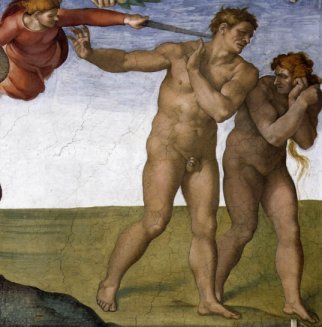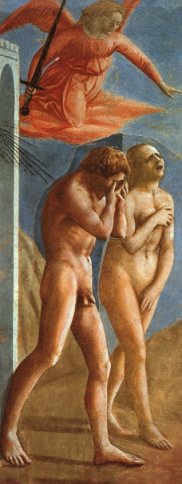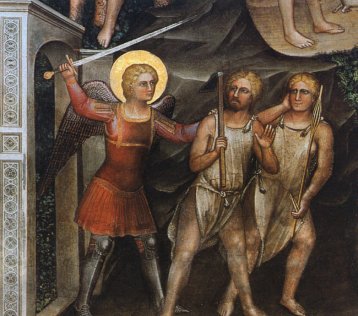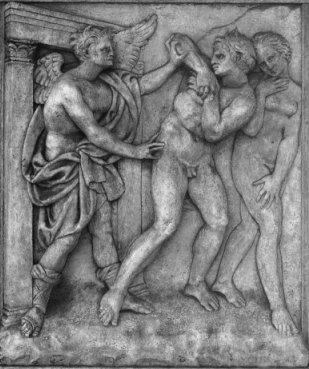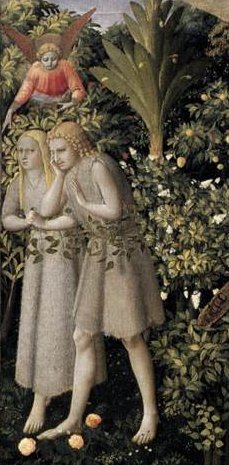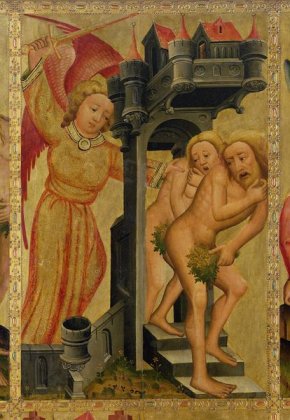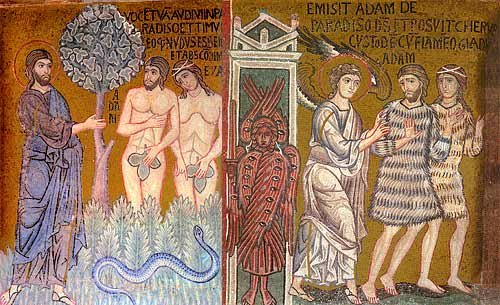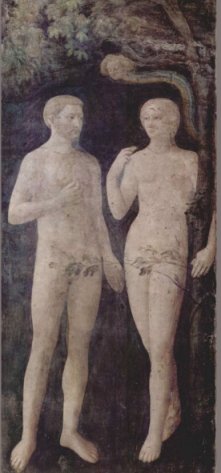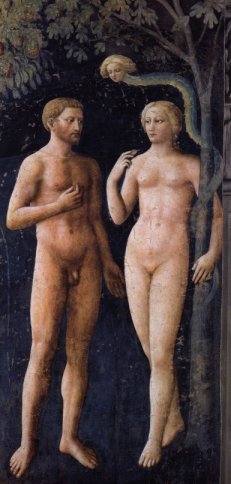|
Was Cosimo right? |
|
|
Sitting in the Brancacci chapel is an evocative experience. Artists have
come here to learn, and Michelangelo knew it well. It is fascinating to
compare Masaccio's expulsion with Michelangelo's version in the Sistine
chapel, particularly that angel. I'm sure Michelangelo had that Masaccio
image in mind. |
|
|
|
|
| The nudity of
Adam and Eve is an essential element of the Genesis story. Before the
fall, 'they were both naked, the man and his wife, and were not ashamed.'
(Genesis 2 v 25) However, once the apple was eaten, 'the eyes of them
both were opened, and they knew that they were naked; and they
sewed fig leaves together, and made themselves aprons.' (Genesis 3
v7) In verse 21, God helped out with the clothing: 'Unto Adam also and to his wife did the LORD God make coats of skins, and clothed them'. Then in verses 23 and 24 came the expulsion: Let's see some other early versions of the expulsion. Artists tweaked the story to suit themselves. Giusto de' Menabuoi's version, from the baptistery in Pisa and around fifty years before Masaccio, keeps to the original story and dresses them in the skins. On the other hand, Jacopo della Quercia's carving at St. Petronius in Bologna (around 1436) shows them naked. His Eve is reminiscent of Masaccio's - could he have seen it? |
|
|
|
|
| This detail from Fra Angelico's Annunciation in the Prado (painted 1430 - 32) shows a rather comfortably dressed Adam and Eve, while Bertram of Minden's version (c 1380, below right) shows the couple still clutching their fig leaves - or what Bertram thought might be fig leaves. Figs probably don't grow that well in Hamburg. | |
|
|
|
| This beautiful mosaic from the Palatine Chapel, Palermo, shows first the covering up with (rather more accurate) fig leaves, then the expulsion with their rather shaggy coats of skins. | |
|
|
|
| So it could be
argued that, in fact, Cosimo was theologically correct in covering up
Adam and Eve at this point in the story, even if he went for leaves
rather than skin coats. Convinced? No, nor am I. Look across to the
other side of the chapel at Masolino's 'prelapsarian' Adam and
Eve. Cosimo covered them up too. No,
Cosimo just didn't think that showing genitals was decent.
|
|
|
|
|
| So why did Masaccio choose to portray them naked? Looking at the images on this page it's clear to me that the Masaccio image has the greatest emotional impact - even more than the Michelangelo. The nudity emphasises the sense of shame, and vulnerability. This is Masaccio's great contribution to art - he was able to take it beyond mere narrative. But what about the naked Jesus? Read on . . . . |
|
